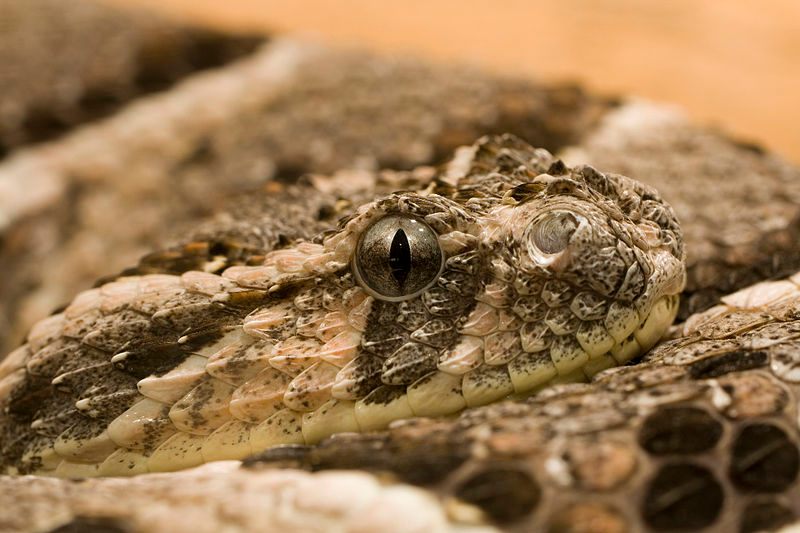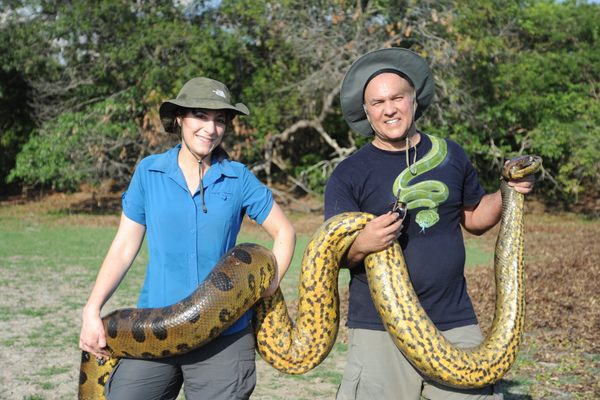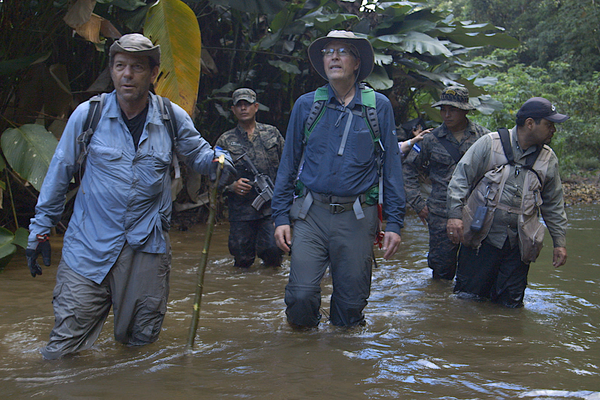The Puff Adder Protects Itself From Predators By Being Unsmellable
The African snake doesn’t seem to emit any scent at all.

A puff adder. (Photo: Julius Rückert/CC BY-SA 3.0)
Like many other snakes, the puff adder has scales that resemble the ground of its natural habitat, allowing the animal to be camouflaged from predators. Unlike many other snakes, the puff adder has another way of keeping itself safe: being completely unsmellable.
The adder’s lack of detectable odor is a form of camouflage known as chemical crypsis. Zoologist Graham Alexander has studied puff adders for years, and watched other animals, noses to the ground, walk right past them.
“He saw dogs and mongooses walk straight over and on these snakes, demonstrating absolutely no awareness of the snakes,” says Ashadee Miller, Alexander’s collaborator and lead author on their new paper on the adders. “Both these species are documented predators of puff adders, and they rely on their keen sense of smell to locate prey—yet there was no response by either of these animals.”

A well-camouflaged puff adder at the Mokolodi Nature Reserve in Botswana. (Photo: Nick Jonsson/CC BY 2.0)
Puff adders, native to Africa, are ambush foragers, which means they hunt by staying very still until prey wanders by and then rapidly striking at it. Graham’s observations that the snakes escape so many animals’ noses led him and Miller to think that they camouflage themselves not just visually, but chemically.
Their research team at the University of the Witwatersrand in South Africa tested that idea by having the best sniffers they could find—trained dogs and meerkats—play a little matching game. They had the animals smell cotton cloths that had been rubbed on different kinds of snakes, including captive and wild puff adders and five other species that are more active hunters (and thus wouldn’t need to hide their scent). The animals then tried to pick the snake’s scent out of a lineup of different smells that included the snake, unscented control cloths and vegetation from the snake’s environment.
If this video of the meerkats in action is any indication, this was one of the most adorable experiments in the history of science.
Miller says that the meerkats learned the task faster than the dogs and were so eager to do the tests that it was often hard to get them away from the equipment when they were done. They weren’t always so easy to work with, though.
“The only problem was that any time a large bird flew over they would stop for several seconds, stand on their hind legs and gaze into the sky to make sure it wasn’t a bird of prey coming in to attack them,” Miller says. “We’d just have to wait until this moment passed.”
Both the dogs and the meerkats could pick out the scents of the active-hunting snakes just fine, but the puff adders tripped them up. The accuracy of their lineup picks was about what you’d get with random guessing, the researchers say, and they couldn’t detect the scent.
When it comes to weird/awesome animal superpowers, “unsmellability” doesn’t seem that impressive, but it serves puff adders well with their sit and wait approach to hunting. Miller and Alexander aren’t sure exactly how the chemical camo works, but Miller has a few ideas she’s going to be testing for her PhD work. One possibility is that the snakes have super slow metabolisms and release few or no odorous compounds. She also says that puff adders’ scales have a unique micro-structure, and that might reduce the number of bacteria and other microbes—normally a significant odor source—living on them.









Follow us on Twitter to get the latest on the world's hidden wonders.
Like us on Facebook to get the latest on the world's hidden wonders.
Follow us on Twitter Like us on Facebook